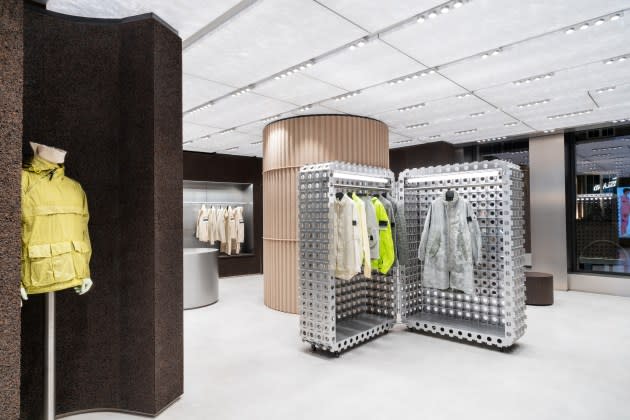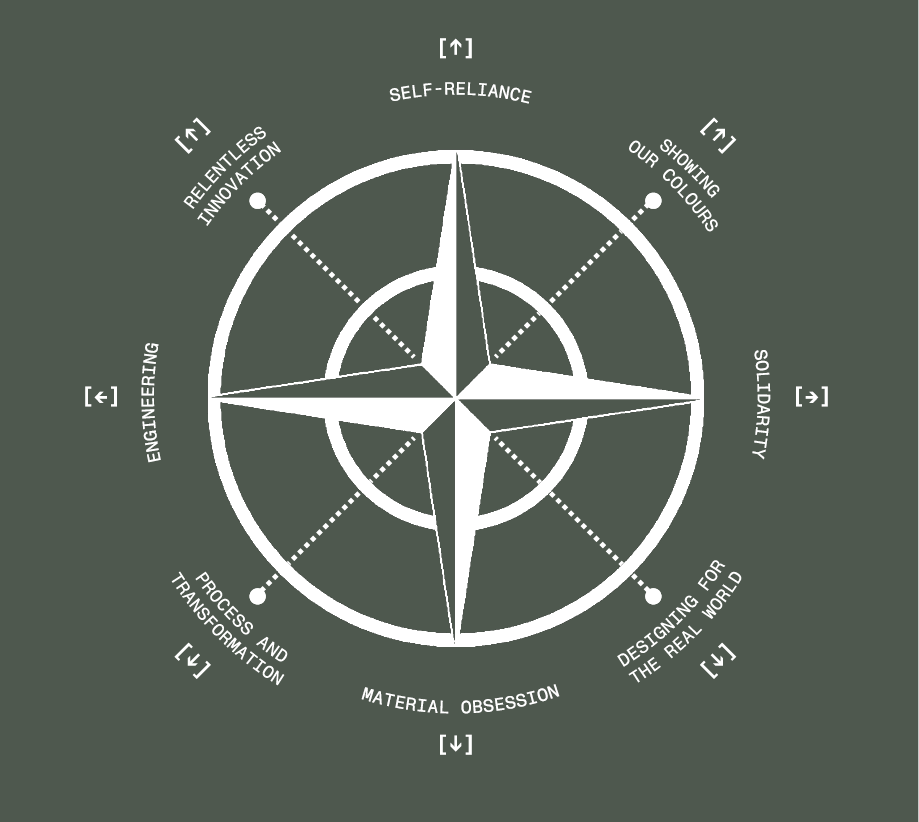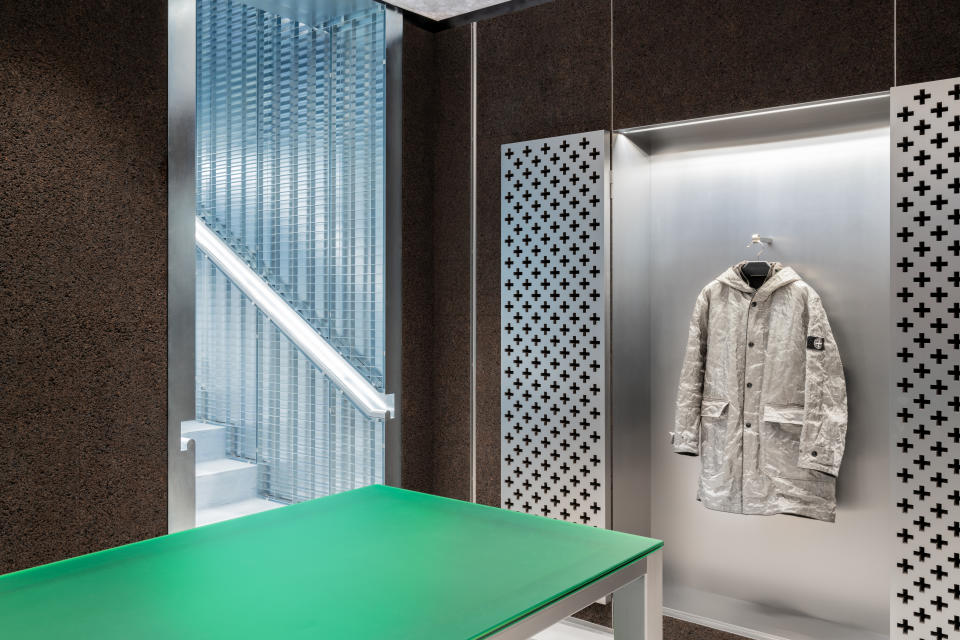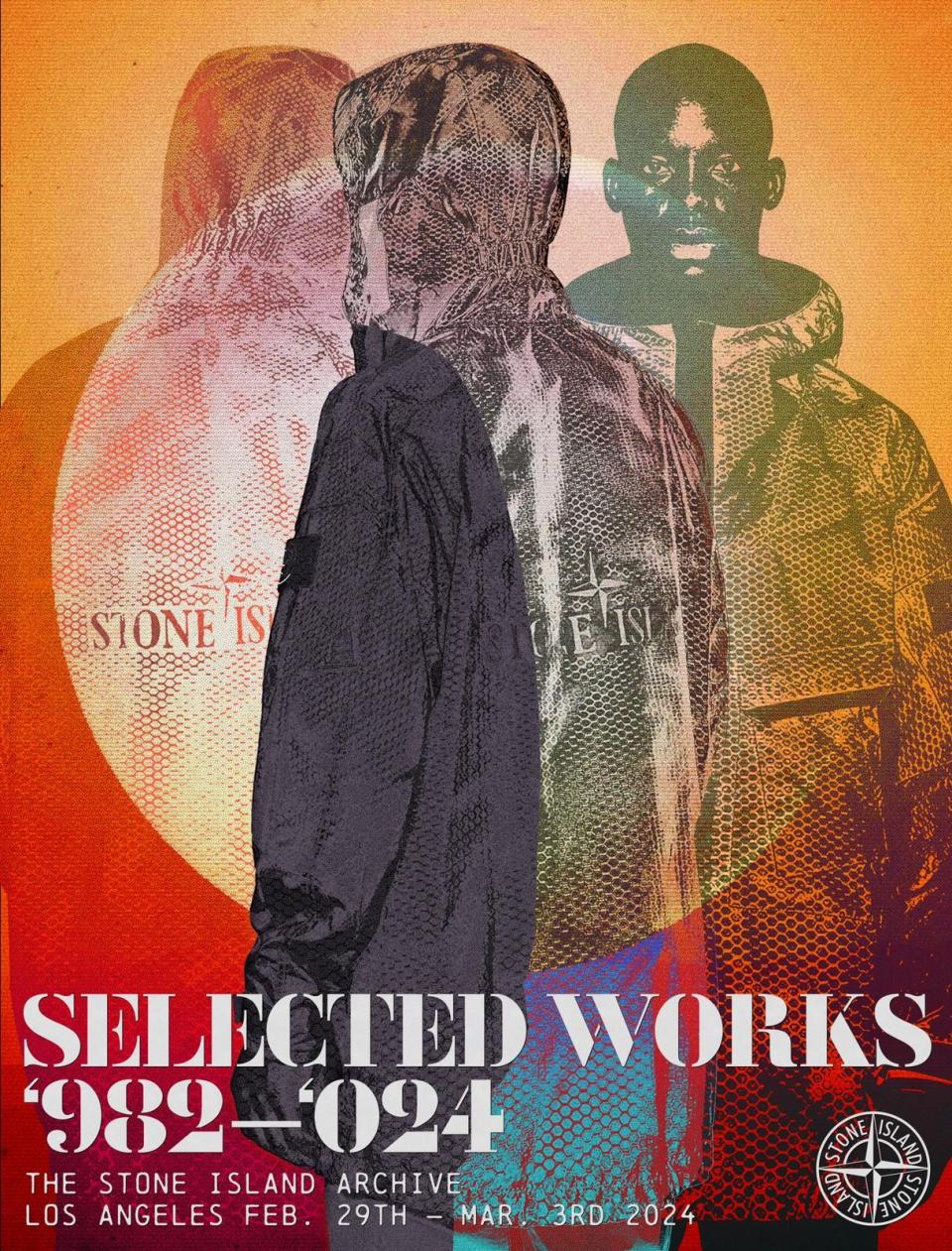Stone Island CEO Robert Triefus Maps Out Strategies

MILAN — “At Stone Island, we follow our own compass inside.”
The mantra reflects the distinctive attitude of Stone Island’s customers, but is also a reference to its logo, which chief executive officer Robert Triefus is leveraging as part of the branding strategy he has set in motion.
More from WWD
The company is marking 42 years in business in 2024 and is kicking off a series of initiatives under Triefus’ lead, including its first fashion show happening in Milan on Friday. Although a one-off event, it will allow Stone Island “to tell the story of a new chapter,” observed Triefus in his first interview in the role.
Triefus joined Stone Island in June after 15 years at Gucci, where he most recently was CEO of the brand’s Vault and Metaverse Ventures in addition to his position as senior executive vice president, corporate and brand strategy.
Stone Island has not traditionally been part of Milan Fashion Week, choosing to emphasize its history of research and development in different contexts, for example at the Salone del Mobile, observed Triefus. True to form, the brand will present the eighth edition of its Prototype Research Series at the upcoming international furniture and design show in April, when it will also move to a new showroom in Via Tortona.

Leveraging very strong brand awareness, Triefus said a goal is to “refine the architecture of the collections, building a more focused hierarchy, with the entry, core and pinnacle subcollections, reaching different customers although the brand has always been very flexible across generations.”
While the collection is a single one, there are three subcollections called Ghost, the most elevated, technical and luxurious, marked by a tone-on-tone logo; Stellina, more classic and urban, and Marina, with seafaring elements, the younger and more fashion-oriented line originated by founder Massimo Osti’s passion for Joseph Conrad’s classic novels.
Triefus said that apparel makes up 97 percent of Stone Island’s offer, outerwear and knitwear being the storied core business, opening up strong potential in other categories, including accessories.
Prices range from 1,700 euros, the top range of Stellina, to 5,000 euros at the highest level for Ghost.
Triefus proudly pointed out the research that has gone into the brand’s Ice Jackets, the reflective and glass materials and the Tela Stella cape hailing from the first Stone Island collection for spring 1982 and inspired by military truck tarpaulins, among others. “I discovered an amazing community that we call ‘la famiglia,’ and collectors who don’t consider the garments as vintage, but continue to wear the pieces, mixing and matching them,” said Triefus.
At the factory, located in Ravarino, about 122 miles from Milan, Stone Island prizes itself on an archive of 60,00 dyeing recipes, the range of the color palettes another signature element of the brand.
All this caught the eye of Moncler Group chairman and CEO Remo Ruffini as Moncler acquired 70 percent of Sportswear Company SpA, owner of the Stone Island brand, in 2020, before taking full control of the firm the following year.
Asked about a potential cannibalization of the two brands, Triefus said Ruffini and chairman Carlo Rivetti, who joined Stone Island in 1983 by acquiring 50 percent of the firm and a decade later with his sister Cristina bought the remaining 50 percent, “share an experimental, cultural and inclusive vision, a belief in apparel, product knowledge and a love of materials, as well as technical and functional garments. Their families are two sides of the same coin.”
The acquisition allowed Stone Island to benefit from shared services, from technology, IT and logistics to human resources and management, Triefus continued. “They are concentrated on ensuring seamless brand visibility. Stone Island and Moncler have very distinctive legacies, different client segments and different price points, and they are not competing,” he said. On the contrary, Stone Island can benefit from the real estate power it would not have on its own.
Triefus said Ruffini was never in a rush to expand Moncler and applies the same prudent approach to Stone Island, avoiding forcing growth. “Stone Island has all that is necessary to meet the opportunities in the market,” he said.
As reported, in the first nine months last year, Stone Island reported a 2 percent gain in revenues to 310.1 million euros, reflecting a change in business model from wholesale to direct-to-consumer.
A new store identity by Rem Koolhaas’ OMA/AMO studio was unveiled in Chicago in 2022, followed by a unit in Munich in July, reflecting the experimental bent of the brand.
Covering three floors over almost 4,000 square feet, the outside of the Munich store is cut from local granite, paying homage to the city itself, and it features walls made with red resin or compressed layers of soil. Cork is the key element of the new global store concept, which has been burned, sand-blasted and coated. The resulting dark, structured cork has functional properties, both absorbing sound and working against humidity.
Shredded recycled paper and resins are compressed under high pressure to create furnishings that seem like concrete. Manually sandblasted corrugated metal panels are applied with sand and resins for textured effects.
Stockholm followed in October and in the summer, a new store will open in Paris in Rue Saint-Honoré.

In August, the company plans to insource its online business, which is now operated under a deal with the troubled Yoox Net-a-porter group, introducing a new site and “harmonizing” its omnichannel platform, “ensuring coordination among channels and product launches,” said Triefus.
The executive has been growing the brand’s retail channel and implementing selective distribution at wholesale. As a consequence, in the first nine months last year, the wholesale channel’s revenues were down 5 percent to 202.1 million euros to continuously improve the quality of the distribution network. The DTC channel grew by 18 percent to 107.9 million euros.
As of the end of June, there were 47 stores in Asia, 23 in the Europe, Middle East and Africa region, and seven in the Americas.
As of Sept. 30, mono-brand stores comprised 77 directly operated stores, a net increase of three units compared to the end of June, including Chengdu Swire and Rinascente in Rome. Stone Island also operated 19 mono-brand wholesale stores.
Triefus said Stone Island historically has a strong business in Europe and in Korea, and is enjoying “very strong momentum” in Japan. The plan is to explore underdeveloped markets, the U.S. and China. For context, in the first nine months, sales in the EMEA region amounted to 225 million euros, Asia reported revenues of 57.8 million euros, and sales in the Americas totaled 27.2 million euros.
“We strengthened our headquarters and regional organization, and took back distribution in Japan, Korea and just completed this in China,” Triefus said.
In September, Stone Island signed a two-year global partnership with Frieze, and, after Seoul, it will travel to Los Angeles at the end of February at Culver City and then in New York in May, “helping to bring the story of the brand to the U.S.,” he added.

Triefus has been building a solid team in addition to Ruffini’s son Romeo, chief business officer, and Francesco Omodei Salé, chief operating officer, hiring last June a new chief marketing officer, Oliver Cooke, who developed his career at Giorgio Armani, Burberry and most recently JW Anderson.
Rivetti’s son Silvio heads the design office and his sister Camilla works on special projects. Their mother, Sabina, has been curating the brand image. “And I know I can count on Carlo’s counsel and great insight,” added Triefus, praising Rivetti for maintaining the “authenticity and legitimate positioning” of the brand over the years.
Triefus said the brand appeals across generations and that, while it is a menswear brand, women account for up to 20 percent of customers — including celebrities such as Dua Lipa — who are drawn to the unisex component. Other famous fans range from Liam Gallagher and Steven Spielberg to Spike Lee and Drake.
Stone Island will unveil on Friday an ad campaign for spring for the first time featuring 16 members of the brand’s community, including, for example, Jason Statham and British rapper Dave, photographed by David Sims with the creative direction by Ferdinando Verderi. The campaign narrative is further enriched by 10 questions for each participant by Hans Ulrich Obrist, artistic director of London’s Serpentine Galleries, with the answers appearing alongside the portraits.

Best of WWD